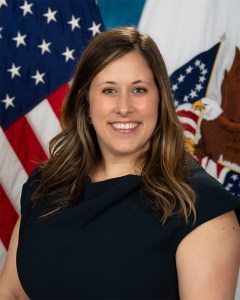Congressional and Legislative Affairs
Every Member of Congress represents Veterans, survivors and caregivers and has a VA-presence in their district and state. The Office of Congressional and Legislative Affairs is the central point in for the Department on all matters involving the U.S. House of Representatives and the U.S. Senate and is the chief liaison on all engagement and interaction with Members of Congress, Committees of jurisdiction, and their offices as well as maintaining responsive and effective communications. With offices located both at the Department’s central office and on Capitol Hill, this webpage is an online tool to share resources with Congressional partners on areas of interest within the Department and ensure accessibility of information to connect with a member of the team.
Assistant Secretary, Office of Congressional and Legislative Affairs




